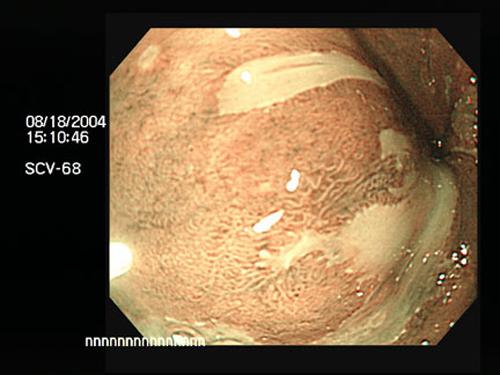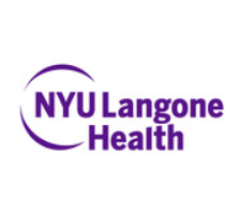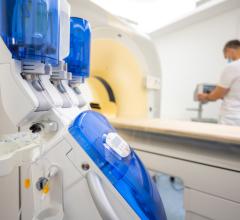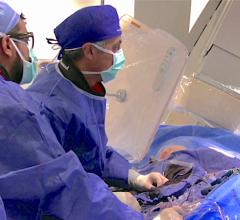
Narrowband imaging (NBI) improves detection and delineation of certain lesions in Barretts esophagus by enhancing their abnormal surface and small vessel pattern relative to standard whitelight endoscopy. Courtesy Mayo.edu
September 8, 2009 - Narrow-band imaging bronchoscopy increases the specificity of bronchoscopic early lung cancer detection and can serve as an alternative detection device, according to research published in the September 2009 issue of the Journal of Thoracic Oncology.
Past research has shown detection of non-small cell lung cancer (NSCLC) while still localized to the surface of the lung can improve cure rates. Bronchoscopic technologies that utilize white light (WLB), auto-fluorescence imaging (AFI) and narrow-band imaging (NBI) have been developed to enhance the ability for physicians to diagnoses NSCLC at a pre-invasive stage. NBI is the newest of these technologies.
To confirm the efficiency of these new technologies, Felix J.F. Herth, M.D. of the Department of Pneumology and Critical Care Medicine at the University of Heidelberg in Germany and his team of researchers conducted a 10-month review of patients in need of airway screening and surveillance. Patients were randomized into groups receiving WFB, AFI or NBI bronchoscopies and any observed abnormal airway mucosa was biopsied.
Out of 57 patients, 30 percent were diagnosed with intraepithelial neoplasia. Researchers found that those observed with NBI and AFI bronchoscopies experienced significantly superior sensitivities compared to WLB alone. NBI also proved to provide high levels of specificity compared to AFI.
“This research shows that when diagnosing early stage lung cancer, using NBI may be a better option than AFI because it increases specificity without compromising sensitivity,” said Dr. Herth. “Continued research on these detection methods is necessary to further understand the best, most accurate ways to increase early diagnosis in lung cancer.”
Reference: Journal of Thoracic Oncology (JTO), the official monthly journal of the International Association for the Study of Lung Cancer (IASLC.org).
For more information: www.IASLC.org and www.mayoresearch.mayo.edu


 August 14, 2025
August 14, 2025 








